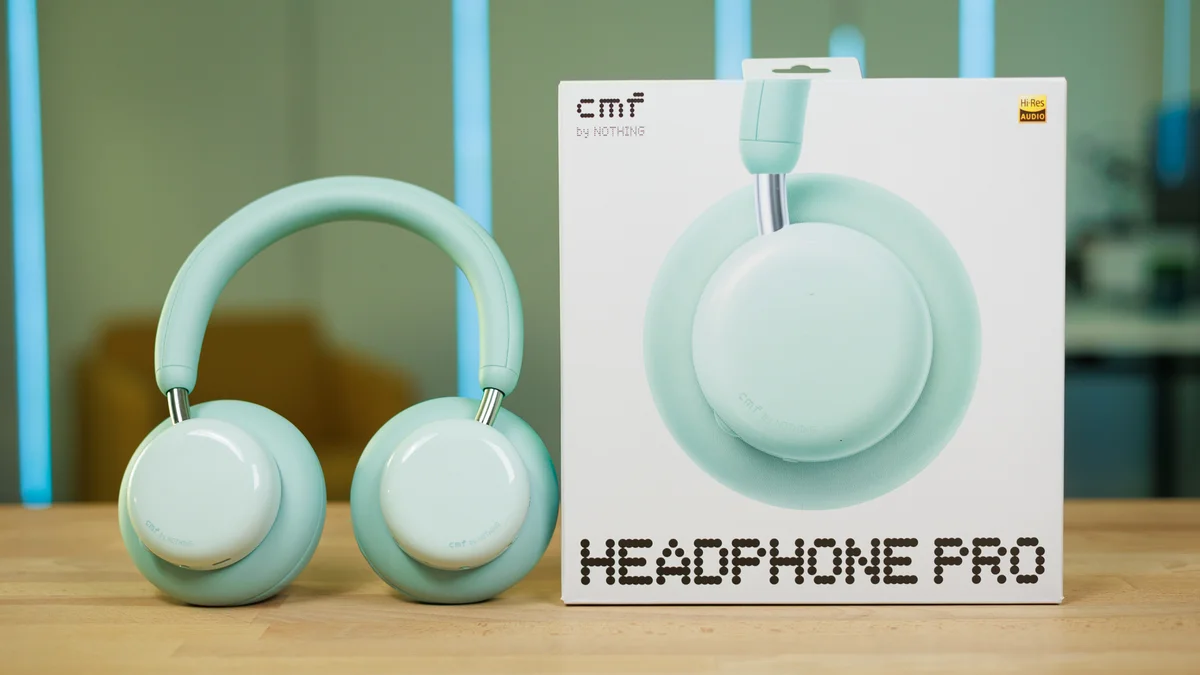
CMF Headphone Pro Review: The New Standard for Sub-$100 Audio?
The $99 Question
The sub-$100 headphone market is a battlefield, a crowded space where compromise is usually the price of admission. For every dollar you save, you typically trade away a feature, a bit of build quality, or a slice of audio fidelity. Into this fray steps CMF by Nothing, the accessible, design-forward sub-brand of the more avant-garde Nothing. While its parent company crafts "Kubrickian" and "baroque" tech that aims to be a statement piece, CMF—which stands for Color, Material, Finish—takes the opposite path. It champions simplicity, modularity, and a playful aesthetic that feels perfectly tuned for a Gen Z audience.
This isn't just about making a cheaper version of a Nothing product; it's a deliberate two-pronged strategy. Nothing targets the tech enthusiast who values a cutting-edge, complex design. CMF targets a mainstream user who wants approachability, personalization, and, above all, value. The CMF Headphone Pro, therefore, shouldn't be judged as a watered-down flagship but as a product with its own distinct mission.

That mission is signaled by the elephant in the room: the "Pro" moniker on a budget product. Let's be real—these aren't for professional studio monitoring. Instead, the name suggests a "pro-level" feature set made accessible to everyone. We're talking Active Noise Cancellation (ANC), LDAC high-resolution audio support, and a battery life that borders on the absurd, all for a price that won't make your wallet weep. The real question, then, is whether the CMF Headphone Pro delivers on this ambitious promise. Let's dive in.
| Feature | CMF Headphone Pro Specifications |
| Drivers | 40mm custom dynamic driver with nickel-coated diaphragm |
| Weight | 283g |
| Battery Life | Up to 100 hours playback (ANC off); Up to 50 hours playback (ANC on) |
| Fast Charging | 5 minutes of charging provides 4 hours of playback |
| Connectivity | Bluetooth 5.4, Bluetooth Multipoint |
| Hi-Res Codecs | LDAC, AAC, SBC |
| Active Noise Cancellation | Hybrid ANC, up to 40dB reduction |
| Microphones | 5-microphone array |
| Controls | Physical controls: Multi-function Roller, Energy Slider, customizable Button |
| Price | $99 / £79 / €99 |
Design & Comfort: Bold, Plastic, and Deceptively Cozy
A Tale of Two Finishes
The CMF Headphone Pro presents a modern, almost minimalist spherical design that feels youthful without being garish. The construction is unabashedly plastic, a decision that immediately signals its budget positioning. However, this isn't a dealbreaker. While some reviewers note the material can feel "a bit cheap", others were surprised by its sturdiness, finding it durable enough for daily use without any sense of fragility.
This choice of material is more than just a cost-saving measure; it's fundamental to the product's identity. Where metal can feel cold, heavy, and "serious," the lightweight plastic used here enables a playful, approachable, and less intimidating feel. It directly contributes to the "Gen Z coziness" some have described—a product designed to be a comfortable companion rather than an impressive statement piece.

Crucially, your perception of this plastic build will likely depend on the color you choose. The matte Dark Grey finish is widely seen as looking and feeling "far more premium," while the glossy Light Grey has been described as feeling "tacky". So, a word to the wise: the finish matters. On the practical side, the headphones don't fold, which might be a drawback for some travelers. However, their earcups rotate 90 degrees to lay flat, making them easy enough to slip into a backpack alongside a laptop. Instead of a hard case, you get a simple but pleasant velvet-like pouch for transport.
The Customization Play
One of the standout design features is the modularity of the ear cushions. They can be easily twisted off and replaced, a feature rarely seen in this price bracket. This serves two purposes. Practically, it's a huge win for hygiene and longevity, allowing you to clean or replace worn-out pads. Aesthetically, it opens the door to personalization. CMF sells additional colors like Orange, allowing you to mix and match for a two-tone look that is uniquely yours. It’s a simple, clever way to inject personality into the product.
All-Day Comfort? Mostly.
Across the board, the consensus on comfort is overwhelmingly positive. At just 283g, they are "super lightweight" and can be worn for hours without feeling like a burden. The headband is well-padded and described as sitting "like a cloud on your head," with just enough clamping force to feel secure without causing pressure.
The earcups are a particular highlight. They are noted as being soft, deep, and slightly larger than those on the more expensive Nothing Headphone. This generous depth means your ears are less likely to touch the inside of the driver housing, a common annoyance on other headphones. This design makes them especially comfortable for long listening sessions and a great fit for those who wear glasses.

There is one consistent caveat, however: heat buildup. Several users reported that the pleather earcups can make your ears feel warm after an hour or so of continuous use. This is a common trade-off with this type of material, but it's something to be aware of if you plan on marathon listening sessions in a warm environment.
The User Experience: Tactile Triumphs and a Curious Slider
The Joy of Physical Controls
In an industry increasingly obsessed with "fiddly touch-sensitive solutions," CMF's decision to stick with all-physical controls is a breath of fresh air, earning praise from nearly every reviewer. There's no accidental pausing or volume ramping here. On the right earcup, a multi-function "Roller" handles volume with a satisfying scroll, playback with a press, and ANC modes with a press-and-hold. It's intuitive and precise. There's also a customizable button for shortcuts.
This commitment to physical interaction feels like a deliberate pushback against the often-frustrating minimalism of touch controls. It provides the kind of unambiguous, tactile feedback that many users crave, reintroducing a sense of tangible connection to the device. While the controls are noted as feeling less "premium" or "refined" than on the flagship Nothing Headphone, their functionality is rock-solid.

The Energy Slider: Gimmick or Game-Changer?
The most unique control is the "Energy Slider" on the left earcup, a physical fader that allows for on-the-fly adjustment of either bass or treble without opening the app. This feature is the ultimate expression of CMF's "analog feel" philosophy, attempting to bridge the gap between old-school hi-fi gear and modern digital audio.

Its usefulness, however, is a point of contention. Some users love it, calling it a "great touch" that adds "an element of fun" and makes it easy to dial down the bass for a podcast and then crank it back up for a hip-hop track. Others, however, found the effect to be "quite subtle" and "not as precise as I hoped," ultimately leaving it untouched. The verdict? It's a subjective feature—a fun toy for some, a forgotten gimmick for others.
Modern Connectivity Suite
The CMF Headphone Pro is packed with a modern connectivity suite that punches well above its price. It features Bluetooth 5.4 and supports both Google Fast Pair and Microsoft Swift Pair, making the initial setup process seamless on Android and Windows devices.
Two key "pro" features stand out. First is Bluetooth Multipoint, which allows you to stay connected to two devices simultaneously—like a laptop and a phone—and switch between them effortlessly. Second is the inclusion of the LDAC codec, which enables high-resolution wireless audio streaming on compatible devices, a genuine rarity for under $100. For those who prefer a wired connection, a 3.5mm cable is included. But there's a catch: the headphones must be powered on to work, meaning they are never truly passive and will still consume battery.

The Sound Profile: Fun, Flawed, but Eminently Fixable
Out of the Box: A Bassy, V-Shaped Welcome
Right out of the box, the CMF Headphone Pro delivers a sound signature that is clearly tuned for mass appeal: a classic, energetic V-shape. The low end is the star of the show. The bass is consistently described as "deep, defined, and pleasant," with a satisfying punch that doesn't become overly boomy or muddy. This makes them a great match for electronic, pop, and hip-hop genres.
The trade-off for this powerful bass is found in the midrange. The mids are "slightly less prominent," which can cause vocals to lack a bit of "warmth and presence" and some instruments to get "lost when the track is more complex". The treble is a mixed bag. It adds a welcome "spark" and clarity, but can occasionally veer into being "a bit scratchy," "metallic," or "sharp at higher volumes". On some tracks, cymbal crashes can become "a bit overpowering" for the more delicate sounds in the mix.

The Two-Minute Tune-Up: Unlocking the Potential
Here's the kicker: the stock tuning is not the end of the story. While the out-of-the-box sound is just "pretty OK", the 40mm drivers are highly capable and can be transformed with a little bit of EQ. Several reviewers discovered a "hack" within the Nothing X app's basic equalizer that unlocks a "much more balanced sound". One user achieved what they described as "phenomenal" audio—comparable to headphones over twice the price—with a simple adjustment: -1dB on the Bass, +1dB on the Mids, and -1dB on the Treble.

Soundstage, Imaging, and a Forgettable Spatial Mode
When it comes to spatial qualities, the performance is respectable for the price. Most agree that the soundstage is on the narrower side compared to more expensive headphones, though one enthusiastic reviewer found it surprisingly wide. The stereo imaging, which is the ability to place instruments in the soundscape, is praised for creating a good "sense of 'space' between each element" in complex, layered tracks.
However, if you're buying these for the Spatial Audio feature, you might want to reconsider. It is almost universally panned. Rather than creating an immersive 3D environment, it adds an unpleasant "echo or reverb effect" that actively "reduces sound quality". The consensus advice is clear: just keep it off.
The Software Handcuffs
While the EQ can work wonders, the Nothing X app imposes some frustrating limitations. The CMF Headphone Pro lacks the "Advanced EQ" with its multiple frequency bands that is available on the flagship Nothing Headphone . Users are limited to a few presets and a simple three-band custom EQ (Bass, Mid, Treble).

To make matters worse, some have encountered a bug where using the custom EQ causes a significant drop in the overall volume, which can make the whole process feel "pointless". This is a clear example of software-based product tiering. CMF gives you a taste of the hardware's premium potential but holds back the full software toolkit, creating a compelling reason to upgrade to their more expensive models.
Cancelling the Noise: Good Enough for the Daily Grind
Active Noise Cancellation (ANC)
The CMF Headphone Pro's ANC is a perfect example of smart, budget-focused engineering. It's not "top-tier," but it consistently "punches above its weight" and is "definitely better than what you'd usually expect at this price".
The engineers appear to have focused their efforts on tackling the most common type of intrusive sound: low-frequency, constant noise. The ANC is highly effective at reducing the drone of a train, the rumble of an underground metro, or the hum of an office A/C unit. This makes it a "solid and effective" companion for the daily commute. The excellent passive noise isolation from the large, well-sealing earcups provides a strong first line of defense, which the ANC then builds upon.
The compromise becomes apparent with higher-pitched and more unpredictable sounds. The ANC struggles to fully eliminate "high-frequency noises" and "high-pitched sudden noises" like nearby conversations or sharp clatter. In the loudest environments, like the squealing London Underground, it will significantly dampen the noise but won't create a bubble of silence. For most everyday situations, it’s more than good enough.
The Underwhelming Transparency Mode
While the ANC is a qualified success, the transparency mode is a consistent point of criticism. It's described as "less refined" than on premium headphones and sounds noticeably "midrange-heavy". The most common complaint is that it makes it difficult to hear your own voice clearly when speaking, which can feel unnatural and "uncomfortable". While it does its basic job of letting you hear announcements or have a quick conversation, the implementation feels like a clear area where costs were cut.
The Marathon Battery and the Questionable Mics
The Undisputed Champion: Battery Life
If the CMF Headphone Pro has one killer, undisputed feature, it's battery life. The performance here isn't just good for the price; it's class-leading. Reviewers have described it as "simply excellent," "impressive," and "phenomenal".
The headline figures are staggering: up to 100 hours of playback on a single charge with ANC turned off, and a still-massive 50 hours with ANC turned on. Even with the more power-hungry LDAC codec active, you can expect a very healthy 38 hours of playtime with ANC. To top it off, the fast charging is incredibly efficient. A quick 5-minute charge provides a solid 4 hours of use, effectively eliminating battery anxiety.

The Microphone Mystery
This brings us to the most polarizing aspect of the CMF Headphone Pro: microphone quality for voice calls. The reports are so contradictory that it's difficult to draw a firm conclusion.
On one hand, some users have had a great experience. One reported that the mic is "really good, even outside in noisy environments or moderate wind," with the person on the other end of the call having "no problem hearing me". Another test found the voice pickup to be "almost too clear" when compared to a phone's built-in microphone.
On the other hand, a direct comparison against the Nothing Headphone found the CMF Pro's mic performance "disappointing." The reviewer's voice sounded "muffled, even in quiet environments," and callers "immediately noticed clarity issues". This suggests an unbalanced compromise in the design. CMF clearly invested heavily in battery technology, resulting in a standout feature. Conversely, the microphone system and its noise-canceling algorithms for voice seem to have received less attention, leading to inconsistent performance. For anyone who plans to use these for frequent and important calls, this makes them a significant gamble.

Final Verdict: An Unbeatable Value with Clear Caveats
After extensive testing, it's clear the CMF Headphone Pro is not just another budget headphone. It's a statement product that aggressively redefines what consumers should expect for under $100. It wraps a fun, supremely comfortable, and customizable design around a feature set that, on paper, belongs to a much higher price bracket. The tactile controls are a joy to use, the sound is surprisingly capable once you tame it with EQ, and the battery life is simply in a league of its own.
But it's not perfect. The "commuter-grade" ANC is good, not great. The transparency mode is weak. And the microphone quality is a roll of the dice. The value proposition is therefore crystal clear: for $99, you get an incredible package for media consumption, but you make sacrifices in communication and absolute noise isolation.

So, who are these for?
They are an ideal choice for students, commuters, and long-haul travelers—anyone who prioritizes marathon battery life and all-day comfort above all else. They are also perfect for the budget-conscious tinkerer who enjoys tweaking an EQ to extract a product's full potential.
And who should hesitate?
Critical audiophiles seeking pristine, neutral sound right out of the box should look elsewhere. The same goes for remote workers or anyone who relies on crystal-clear voice calls. If you need top-tier, all-encompassing noise cancellation to survive the most chaotic environments, you'll still need to invest in a premium model from Sony or Bose. For those seeking a balanced middle ground, a competitor like the Anker Soundcore Q45 might offer a more consistent performance in sound and ANC, albeit without CMF's unique design flair.
Ultimately, the CMF Headphone Pro is an easy recommendation with a few important asterisks. The "Pro" name might be a marketing stretch, but the value is undeniable. They are a flawed but fantastic product whose strengths are so pronounced that, for the right person, they are an absolute steal.
| The Verdict at a Glance |
| Pros |
| ✓ Incredible value for money |
| ✓ Class-leading, marathon battery life |
| ✓ Extremely comfortable for long sessions, even with glasses |
| ✓ Fun, lightweight, and customizable design with swappable pads |
| ✓ Excellent and intuitive physical controls |
| ✓ Surprisingly capable sound quality (with EQ adjustments) |
| ✓ Premium features like LDAC and Bluetooth Multipoint |
| Cons |
| ✗ All-plastic build can feel cheap depending on the finish |
| ✗ Out-of-the-box sound is bass-heavy and requires EQ to be balanced |
| ✗ ANC struggles with high-frequency and sudden noises |
| ✗ Weak and unnatural-sounding transparency mode |
| ✗ Inconsistent and questionable microphone quality for calls |
| ✗ Limited EQ options and potential volume bug in the companion app |

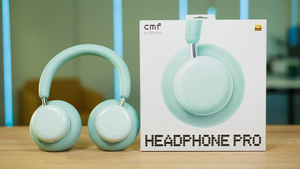
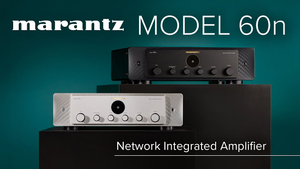
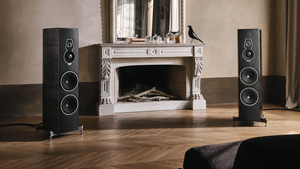

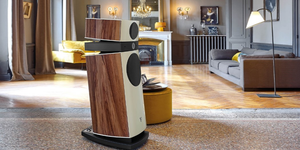
Comments